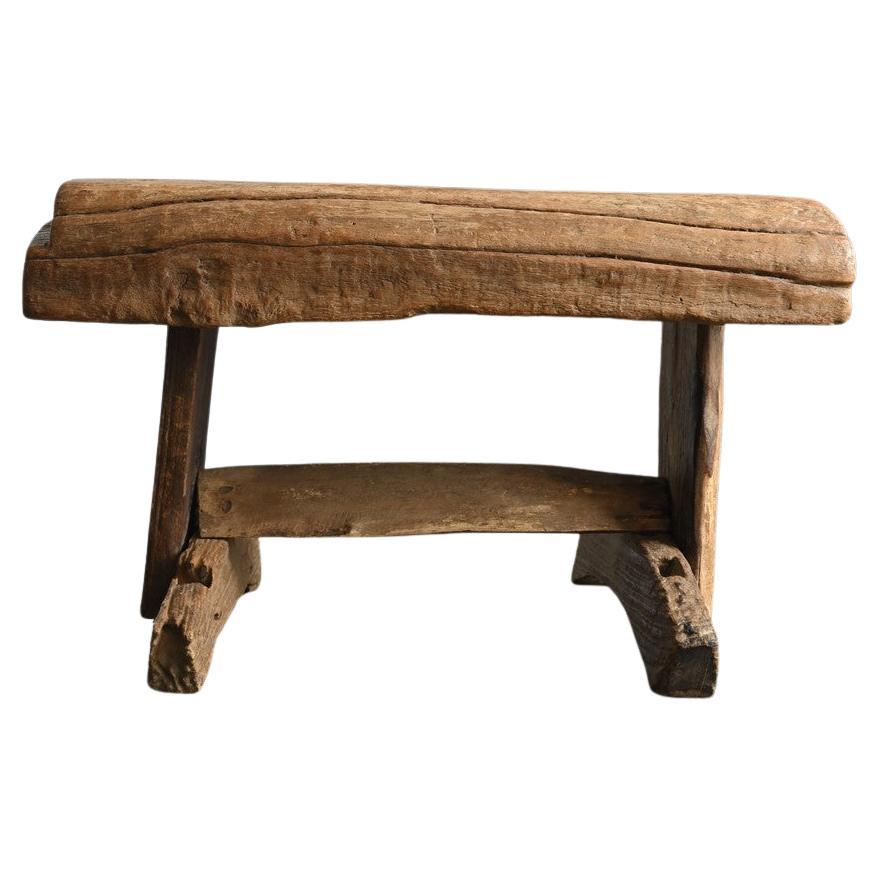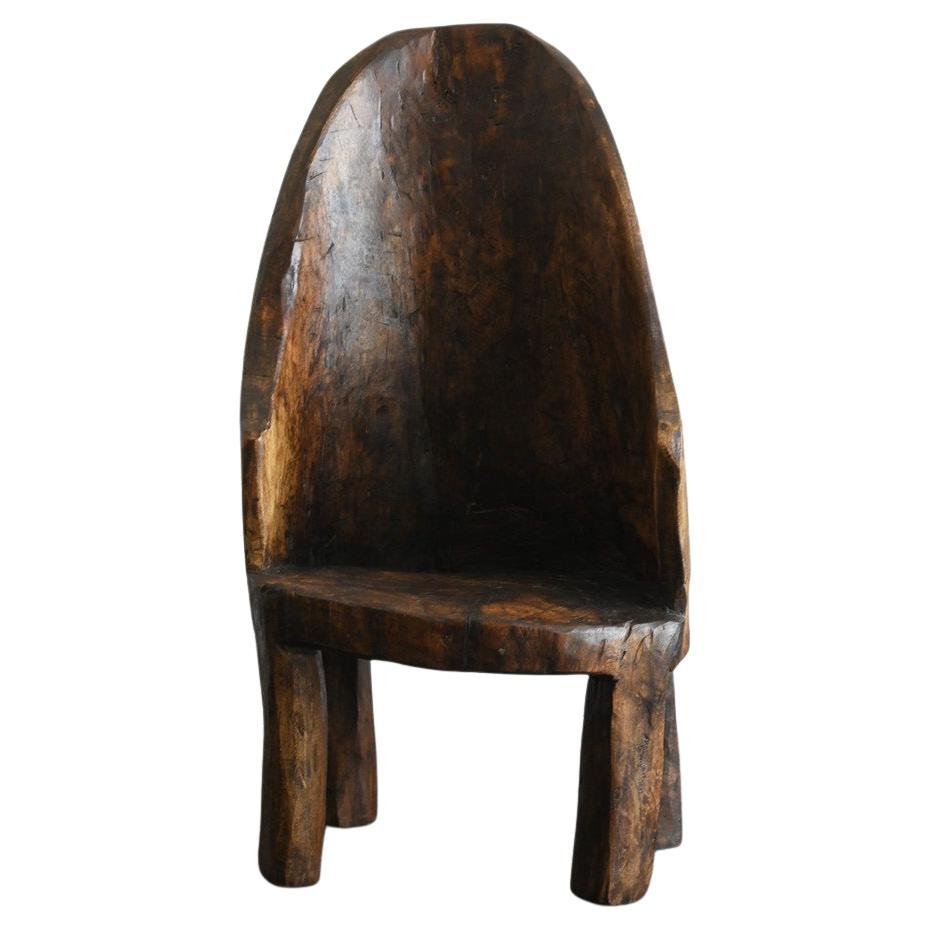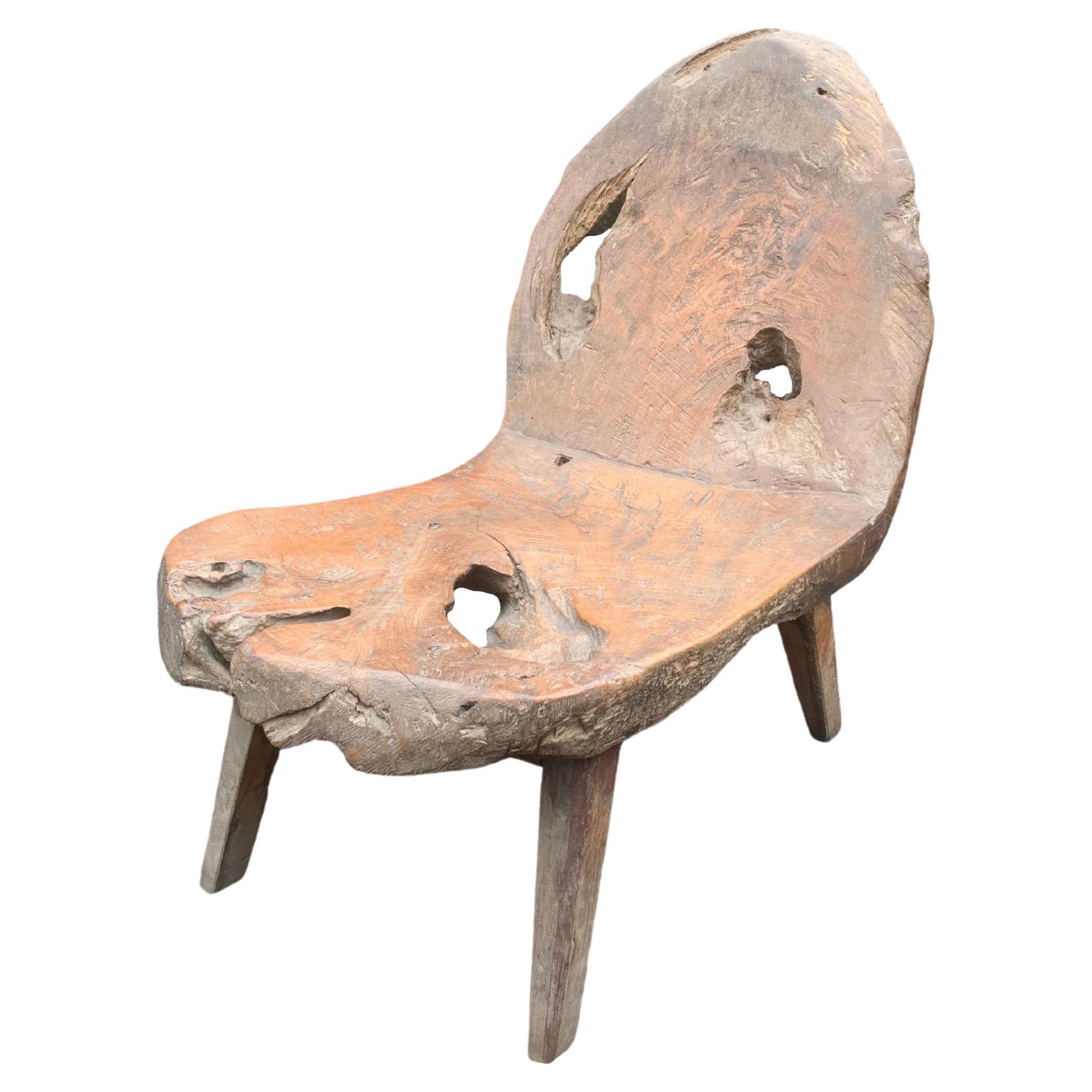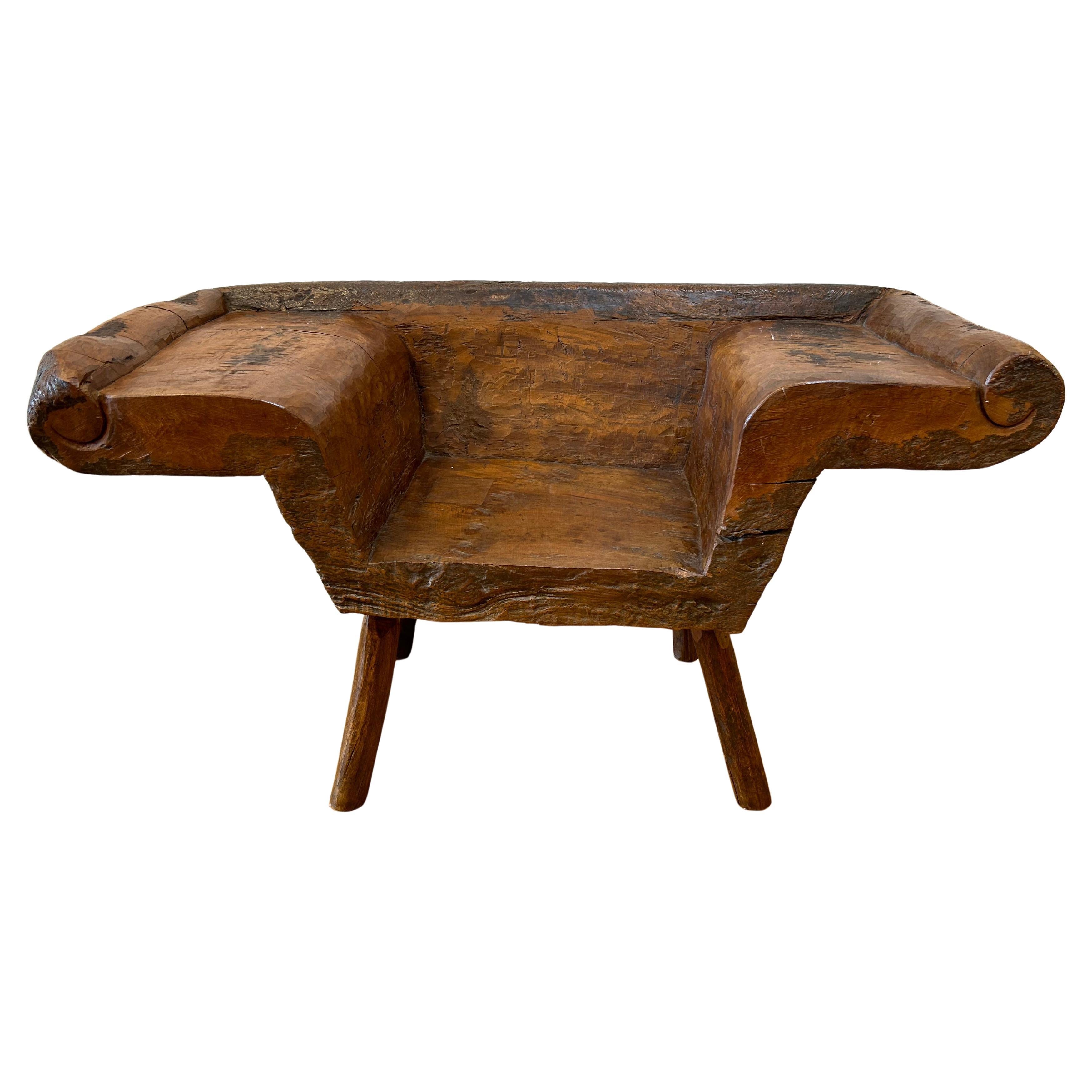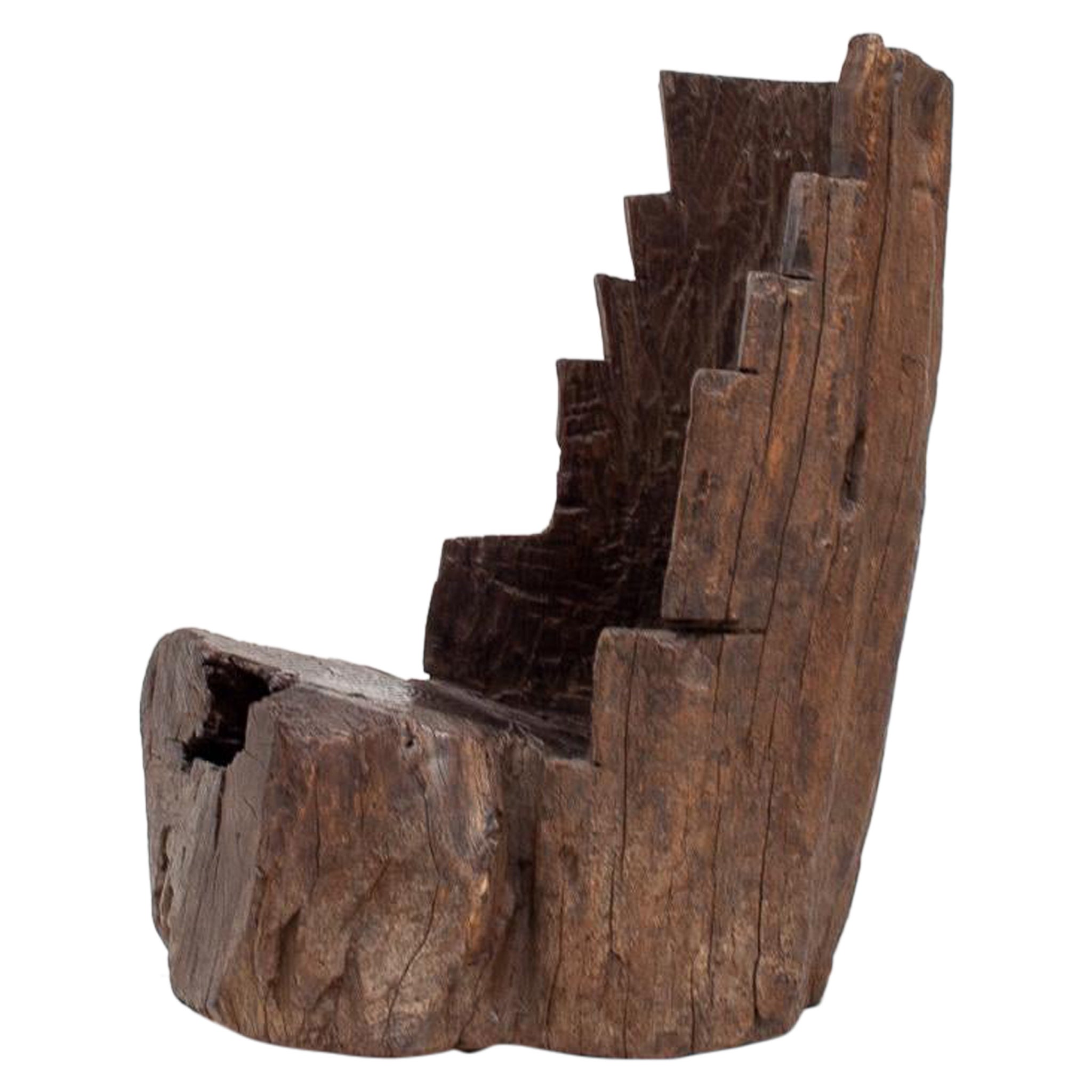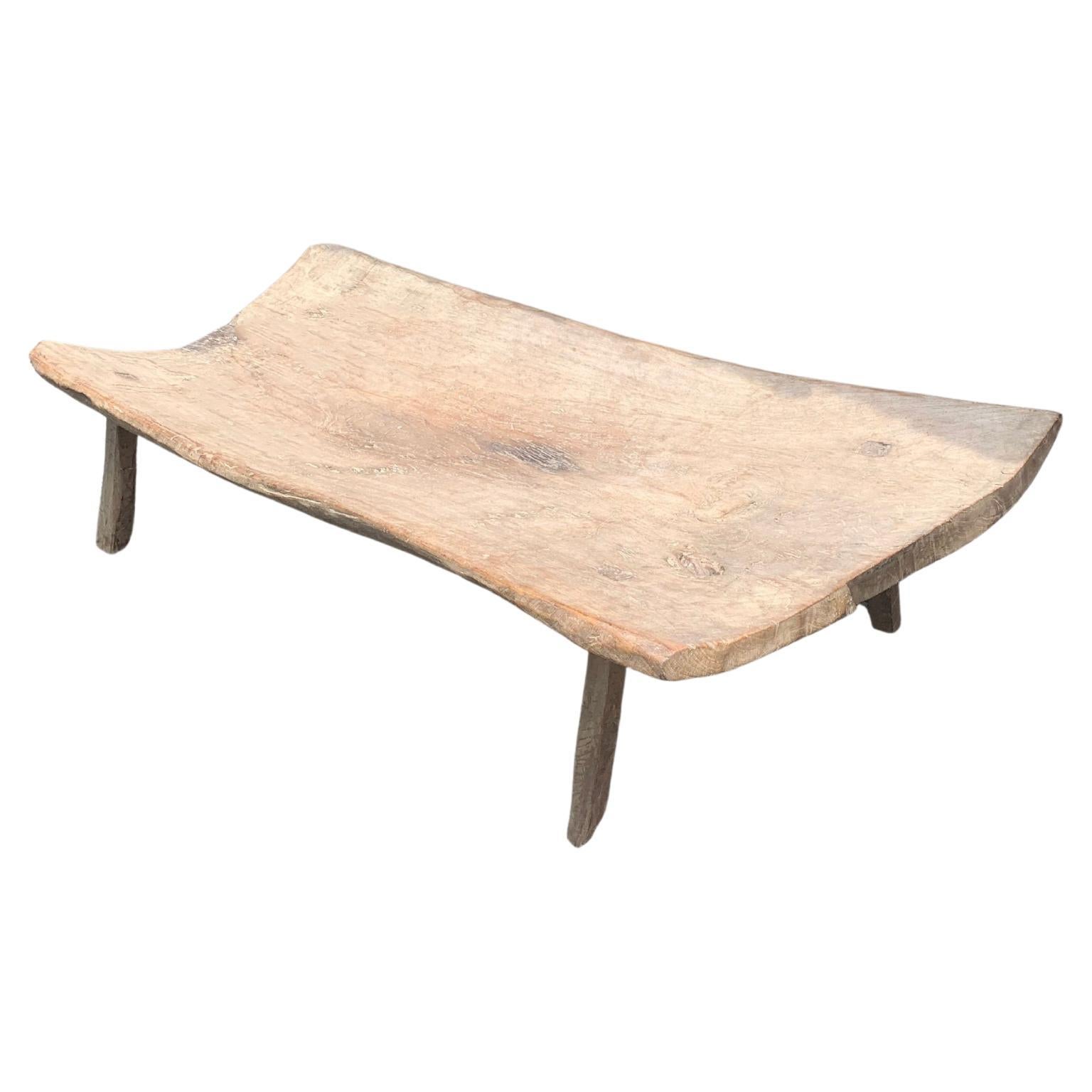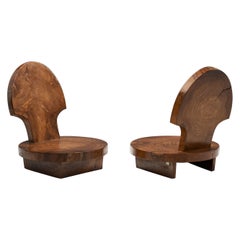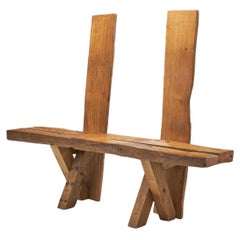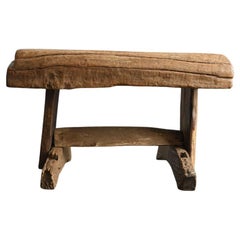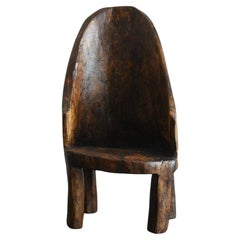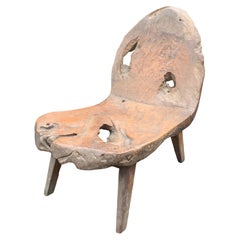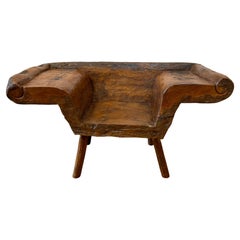Items Similar to Tibetan Carved Wood “Tête a Tête” Love Seat, Tibet 19th Century
Want more images or videos?
Request additional images or videos from the seller
1 of 21
Tibetan Carved Wood “Tête a Tête” Love Seat, Tibet 19th Century
$12,500
£9,556.92
€11,007.64
CA$17,516.33
A$19,555.34
CHF 10,246.70
MX$239,376.53
NOK 130,133.23
SEK 122,699.12
DKK 82,151.12
Shipping
Retrieving quote...The 1stDibs Promise:
Authenticity Guarantee,
Money-Back Guarantee,
24-Hour Cancellation
About the Item
This so-called “tête a tête” bench from Tibet is a truly unique and historic piece. Furniture from Tibet generally brings to mind hand-painted wooden creations with religious and folk patterns and exceptional craftsmanship. This love seat from the 1800s is a much less decorated, but nonetheless an amazing piece to behold.
There are two types of love seats, this form is known as a tête-à-tête, courting bench, or conversation bench. In this form, the two seats are arranged in an S shape, so that two people can converse while looking at each other and being within arm's reach, while at the same time typically retaining a modest barrier. The history of the love seat can be traced as far back as the late 1600s when this intimate seating arrangement for two first appeared. Unlike its Victorian counterparts in France and England, this present bench is made from a single, large tree trunk. The trunk was hollowed out and carved into this form, therefore there is no joinery or separate pieces. This gives it a very organic, rustic look that is effortlessly genuine. The backs are slightly bent, and the seats are quite smooth and reinforced, which shows that this bench wasn’t created to only be a decorative piece. It appears as if history got engrained into the beautiful solid wood, which creates a historic character.
In the 21st century, love seats are prominent in homes not just because of their space-saving capabilities but because of their enduring style. The rough, organic character of this bench has never gone out of style, as the pioneering Brazilian architect and designer, José Zanine Caldas’s works can testify. This Tibetan bench is a great choice to make both a historic, and a contemporary statement. It is a true novelty.
Condition:
In good vintage condition. Wear consistent with age and use. The wood has chips and scratches.
Dimensions:
41.33 in W x 19.68 in D x 30.31 in H
105 cm W x 50 cm D x 77 cm H
Shipping:
This seat will be packed and shipped with the greatest care to make sure you will receive the item in the gallery condition. Complimentary shipping within the Netherlands.
- Dimensions:Height: 30.32 in (77 cm)Width: 41.34 in (105 cm)Depth: 19.69 in (50 cm)
- Style:Other (Of the Period)
- Materials and Techniques:
- Place of Origin:
- Period:
- Date of Manufacture:19th Century
- Condition:Wear consistent with age and use. The wood has chips and scratches.
- Seller Location:Utrecht, NL
- Reference Number:Seller: 202106731stDibs: LU2947326463062
About the Seller
5.0
Recognized Seller
These prestigious sellers are industry leaders and represent the highest echelon for item quality and design.
Platinum Seller
Premium sellers with a 4.7+ rating and 24-hour response times
1stDibs seller since 2017
523 sales on 1stDibs
Typical response time: 5 hours
Associations
20th Century Specialists
- ShippingRetrieving quote...Shipping from: Utrecht, Netherlands
- Return Policy
Authenticity Guarantee
In the unlikely event there’s an issue with an item’s authenticity, contact us within 1 year for a full refund. DetailsMoney-Back Guarantee
If your item is not as described, is damaged in transit, or does not arrive, contact us within 7 days for a full refund. Details24-Hour Cancellation
You have a 24-hour grace period in which to reconsider your purchase, with no questions asked.Vetted Professional Sellers
Our world-class sellers must adhere to strict standards for service and quality, maintaining the integrity of our listings.Price-Match Guarantee
If you find that a seller listed the same item for a lower price elsewhere, we’ll match it.Trusted Global Delivery
Our best-in-class carrier network provides specialized shipping options worldwide, including custom delivery.More From This Seller
View AllTraditional Carved Norwegian Kubbestol, Norway 1800s
Located in Utrecht, NL
This “kubbstol” or “kubbestol” is a traditional Scandinavian chair made from a log. The kubbestol was quite common in some districts of Norway from about 1750 to 1960, where it was usually made from logs with significant girth and three to four feet in length.
The tree trunk was hollowed out so that the base (from the seat down) would be cylindrical while the back of the chair continues upward from the seat in a curved shield that makes the chair both snug and comfortable. Most, but not all, kubbestols were decorated with carving, painting, or some combination of the two. This chair has beautiful folk patterns hand carved into it, with visible, raw craftsmanship. Carved and painted decorations would differ from district to district and styles changed over time. While the log is seemingly roughly shaped, this chair is surprisingly comfortable, as functionality has been historically important for Scandinavian furniture makers. The kubbestol was often placed next to the open-hearth fireplace or next to the bed, and it was reserved for the head of the household. Large, impressive farmhouses might have had several richly carved and painted kubbestols as a display of wealth and status.
These days the log chair has become a symbol of Scandinavian roots for many families with ties to Norway, Sweden, or Denmark. The kubbestol is a reminder of our rural heritage and a time when most things in and around the home were made by hand from materials found in nature. Essentially a chair hewn from a tree trunk, this chair is as closely associated with Norway as Peer Gynt...
Category
Antique 19th Century Norwegian Brutalist Chairs
Materials
Wood
Handcrafted Teak Root Bench, Europe Late 20th Century
Located in Utrecht, NL
Inspired by the beauty of the natural root form, this organic teak bench is handcrafted from one piece of teak root. The root is painstakingly unear...
Category
Late 20th Century European Other Benches
Materials
Wood
Contemporary Solid Wood Low Chairs, Asia, 21st Century
Located in Utrecht, NL
Contemporary interior design refers to the style of the moment, which means it is constantly evolving with time. These low chairs are about recognizing beauty in humble simplicity while showcasing exceptional craftsmanship.
Low chairs have been common around Asia for centuries. These types of chairs, like the Japanese “zaisu” or the traditional Indian “Pida” chairs...
Category
21st Century and Contemporary Asian Other Chairs
Materials
Wood
Jean & Sébastien Touret Oak Bench, France, 1950s
Located in Utrecht, NL
The term brutalism — which derives from the French word brut, meaning “raw” — was originally coined to describe an architectural style that emerged in the 1950s featuring monumental buildings, usually made of unornamented concrete, whose design was meant to project an air of strength and solidity. Similarly, in furniture design Brutalism inspired designers to create models with the same look of strength and style.
This Jean & Sébastien Touret...
Category
Vintage 1950s French Mid-Century Modern Benches
Materials
Oak
Pair of Wooden Elm Chinese Benches, China Early 20th century
Located in Utrecht, NL
These benches were originally crafted for public spaces - finding their way into homes, shops, and even workstations at a later stage. They bear the mark of the early 20th-century, a...
Category
Early 20th Century Chinese Mid-Century Modern Benches
Materials
Elm
Hand Carved African Baule Tribal Chairs, Ivory Coast, Early 20th century
Located in Utrecht, NL
The Baule Tribe from the Ivory Coast of West Africa is well-known for their artistic tribal art, sculptures, and furniture. With a rich cultural history, their creations are also full of history both visually and in their execution. This beautiful pair of chairs is the visual epitome of the tribe’s talents.
The thin, wooden yokes...
Category
Early 20th Century Ivorian Modern Chairs
Materials
Wood
You May Also Like
Old Asian wooden bench/20th century/wooden chair
Located in Sammu-shi, Chiba
The revised text is now complete, so please translate it faithfully into English. This is a bench that has been remade from old wooden tools created around the 20th century. The exac...
Category
20th Century Southeast Asian Other Benches
Materials
Oak
Old Indian wooden low chairA/20th century/Chair made from a single piece of wood
Located in Sammu-shi, Chiba
This is an old wooden chair made in India, dating back to around the 20th century. Carved directly from a single log, it conveys a warmth and strength that can only come from handcra...
Category
20th Century Indian Other Chairs
Materials
Wood
Solid Teak Chair Hand-Carved from Madura Island, Java, Indonesia, c. 1900
Located in Jimbaran, Bali
This hand-carved teak wood chair originates from the Island of Madura, off the coast of Northeastern Java. It features a wonderful organic shape with angular legs. The mix of texture...
Category
Early 20th Century Indonesian Other Chairs
Materials
Wood, Teak
$2,000 Sale Price
20% Off
Wonderful 19th Century Indonesian Bench.
Located in Middleburg, VA
A distinctive example of vernacular Indonesian craftsmanship, this 19th-century bench was carved from a single massive piece of Javanese teak root. Made circa 1890 in Java, its sculp...
Category
Antique 19th Century Indonesian Rustic Benches
Materials
Teak
A Dug-out Carved Rustic Primitive Tree Trunk Fireside Chair Formed of Elm, c1800
Located in Hitchin, England
An amazing dug-out tree trunk chair dating from the 1800s and originating from England - formed from the base of an Elm tree trunk and would have been used in daily life which is dem...
Category
Antique 18th Century British Rustic Armchairs
Materials
Wood
Sculptural Teak Bench Hand-Carved from Madura Island, Java, Indonesia, c. 1900
Located in Jimbaran, Bali
This hand-carved teak wood bench originates from the Island of Madura, off the coast of Northeastern Java. It features a wonderful curved shape with angular legs. A wonderful sculptu...
Category
Early 20th Century Indonesian Other Benches
Materials
Wood, Teak
$2,880 Sale Price
20% Off
More Ways To Browse
Antique Tree Seat
Antique Tete A Tete
Carved Tree Chair
Tete A Tete Seating
Hollow Tree
Jose Zanine Chairs
Tete A Tete Seat
Tibet Chair
Tree Trunk Hollow
Tete A Tete Chairs
Victorian Antique Love Seat
Victorian Conversation Chair
1600s Chair
Victorian Tete A Tete
Antique Tete A Tete Chair
Tibetan Bench
Antique Tibetan Trunk
Painted Tibetan Trunk
